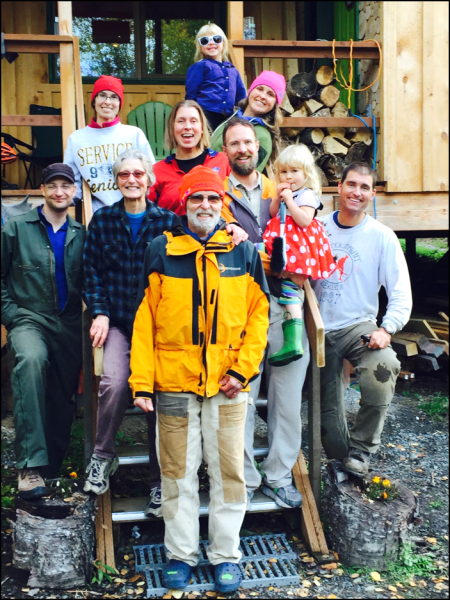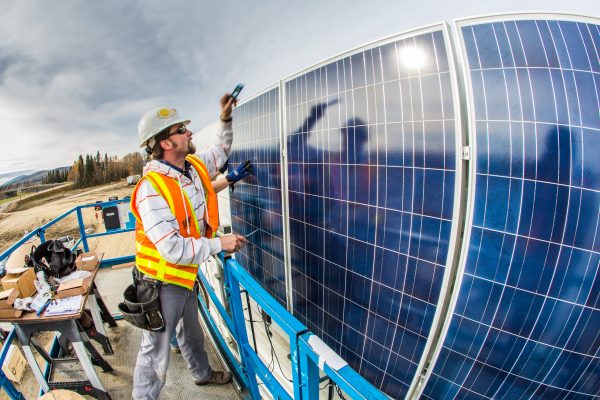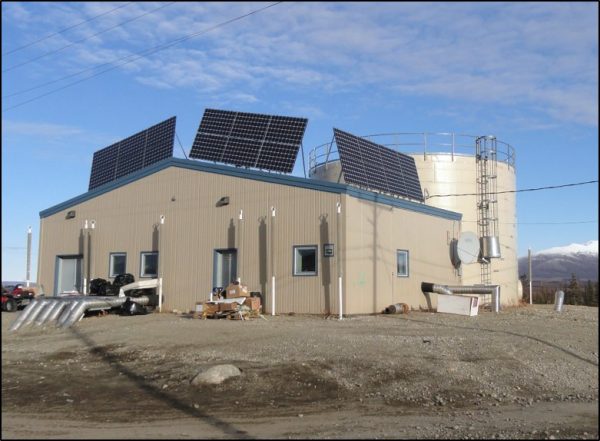Chasing the sun, a UAF researcher makes a journey back home
July 27, 2016
Max Frey
907-474-1143

The Alaska Center for Energy and Power’s Erin Whitney likes to push herself. A former competitive Nordic skier, she enjoys extreme adventures with her family while taking advantage of Alaska’s summer sunlight.
She described a recent adventure where, after a backpacking trip in the Wrangell Mountains with her husband, she returned home, gathered up her children (ages four and five) and in-laws (both nearing their 80s), and traveled to Homer to spend time in Halibut Cove Lagoon. She explained, with a laugh, how she was both proud and relieved that they had successfully pulled off ocean kayaking with two children and two seniors without incident.
Whitney views her adventures into the Alaska wilderness as healing and therapeutic, serving as a source of peace that grounds her.
“I think it’s something about extremes, and I don’t mean extremes in a crazy way,” she said. “I just mean extremes in the way that make us feel alive and connected to something greater than ourselves, and which bonds us inexplicably.”
As the leader of ACEP’s Data Collection and Analysis Program, her work is also linked to the Alaska outdoors. Part of her job is focused on collecting data on solar photovoltaic power generation around the state.
Whitney grew up in Anchorage and graduated from Service High School in 1992. She left the state to attend school at Williams College in Massachusetts, where she majored in chemistry.
Why chemistry? “Because it’s beautiful,” she said with a broad smile on her face.
Chemistry is a central science that explains many natural phenomena, she said. She loves how the science can be both fundamental and applied.

After attaining a bachelor’s degree at Williams College, Whitney moved on to the University of Colorado, where she earned a doctorate in physical chemistry and began a successful career with the National Renewable Energy Laboratory in Golden, Colorado. Her work focused on next-generation solar photovoltaics, energy analysis and energy storage, among other projects.
After nearly a decade of working for NREL, Whitney was enticed by an offer to move back to Alaska and work at ACEP.
Whitney said solar power can be a viable option even in a state like Alaska, which has almost no sunlight for half of the year.
“It turns out that we actually have a great solar energy resource up here,” she said. Less than half the state — the area above the Arctic Circle — lacks sunlight in mid-winter, she noted. “Alaska’s solar energy resource is on par with that of Germany, which has the greatest installed solar capacity in the world.”
The falling price of solar panels and other factors specific to the North — such as enhanced output in cold temperatures and the reflective effect of snow — also make solar power an economical and appealing technology, Whitney said. These factors have not yet been studied systematically, she said, and that is where she believes her niche is.

Working with ACEP’s Data Collection and Analysis Program team, Whitney has already made great strides forward for the development of solar photovoltaics in Alaska. One of her projects is the compilation of a solar-performance database that will allow, for the first time, an “apples to apples” comparison of cost and performance of solar installations in Alaska. Once complete, it will serve as a resource benefiting both business development and communities looking to cut the cost of burning diesel to generate electricity.
“Energy is all about people,” she said. “Helping communities analyze and optimize their energy resources and energy mixes isn’t just theoretical, it has real consequences. It affects how much communities pay for their diesel for their heat and electricity, and how much money they have left for other priorities such as health and education.”
Life in Alaska often revolves around light, Whitney noted.
“These extremes, this wildness, these energy challenges, these aren’t the only reasons I returned to Alaska,” she said. “I returned to Alaska because working on these challenges impacts people in real ways.”


